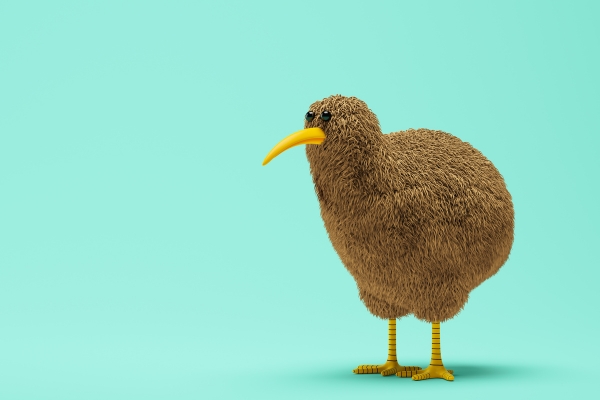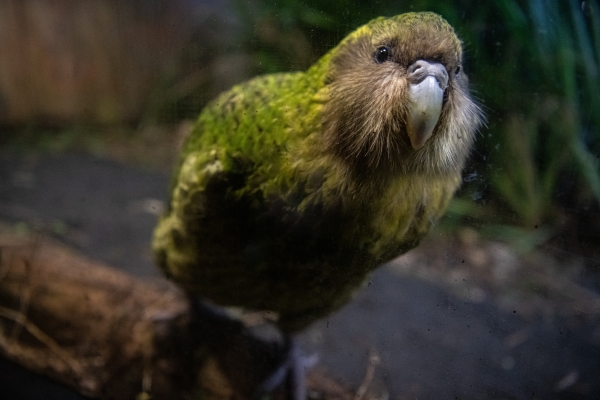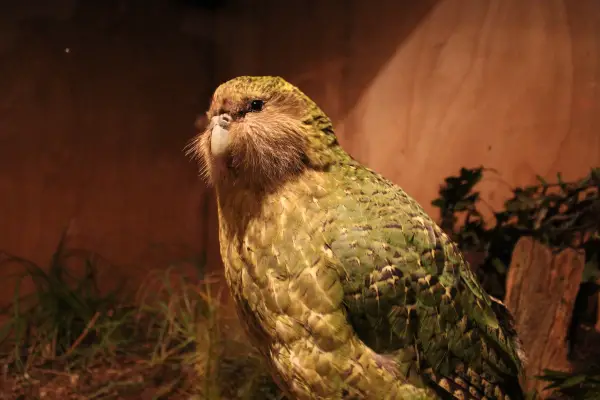New Zealand’s Iconic Island Birds
New Zealand is home to some of the world’s most unique and endangered birds. Isolated for 80 million years, the island nation was devoid of land mammals before humans arrived. In this predator-free environment, birds like the flightless kiwi and giant kākāpō were able to evolve without the threat of mammalian predators.
But the introduction of non-native predators like rats, stoats and possums has been disastrous, pushing many iconic species to the brink of extinction. Intensive conservation efforts in recent decades have prevented extinction and helped stabilize populations, but these remarkable birds still face an uncertain future.
The Quirky and Vulnerable Kākāpō
Known for its owl-like face, whiskery feathers and inability to fly, the critically endangered kākāpō is one of New Zealand’s most distinctive and vulnerable birds. As the world’s only flightless parrot, it compensates for its lack of flight with its powerful legs, using its wings mainly for balance and support.
This strange nocturnal bird was once widespread across New Zealand but predation by introduced mammals reduced its numbers to just 51 birds in 1995. Kākāpō now only remain on three small predator-free islands.
Intensive conservation efforts since the 1990s have led to a slow but steady recovery. As of 2022 there were now 212 adult kākāpō, lifted from the brink of extinction.
But the inspiring rescue mission continues to ensure the world does not lose this eccentric parrot. Artificial insemination and hand rearing of chicks have proven vital given kākāpō no longer breed well naturally. Their survival remains heavily managed to protect them. Global interest and support through DOC’s kākāpō recovery program and the Kākāpō 125 initiative aims to boost the population to 125 breeding females by 2025.
The Plight of the Iconic Kiwi
Equally iconic is New Zealand’s national emblem – the diminutive kiwi. About the size of a domestic chicken, this flightless bird has brown plumage, hair-like feathers, large feet and a long slender bill with nostrils at the tip for sniffing out food. Kiwi lack typical bird bones, instead having marrow-filled bones attached to their muscle like mammals. They also have a highly developed sense of smell and night vision but poor eyesight.

Once common across all of New Zealand, habitat loss and predators have relegated land-dwelling kiwi to just 5% of their former range . The five kiwi species (great spotted, little spotted, brown, rowi and tokoeka) now cling to survival on offshore islands and fenced sanctuaries. Their numbers have plunged from an estimated 12 million before humans arrived to just 68,000 today. Of the five species, two are listed as endangered and three as vulnerable.
Community Conservation Efforts Making a Difference
In response to their drastic decline, kiwi recovery and breeding programs involve captive rearing, predator control, habitat restoration and community engagement. Numerous community groups dedicate huge efforts to monitoring and protecting wild kiwi populations. These include services like Kiwis for Kiwi and Operation Nest Egg. Such initiatives collect kiwi eggs, incubate them in captivity and later release chicks into the wild, boosting chick survival from just 5% to 60-90% .
Local and regional projects have also created an extra 30 community-led kiwi sanctuaries, bringing the total to over 50 across New Zealand . Sanctuaries are vital refuges, but connecting them into predator-free corridors can allow kiwi to disperse safely to new areas. Major nationwide projects also aim to eradicate all mammalian predators by 2050 to recreate a safe haven similar to pre-human New Zealand .
If community efforts keep gaining momentum, kiwi may have more hope than almost any other endangered bird. Their estimated population decline has been stemmed and some species such as rowi kiwi have grown by over 50% this decade. But they still require extensive management to survive in areas shared with humans and introduced predators.

The Epic Challenge to Save Ancient Birds
The mammoth efforts required to save these quirky birds highlights both their vulnerability and irreplaceable value. As descendants of ancient feathered dinosaurs, their lineage stretches back over 60 million years. Losing them would deprive the world of two of nature’s most extraordinary creations. They also retain immense cultural importance to native Māori who consider them taonga (treasured possessions).
But the future still seems tenuous for both kākāpō and kiwi. Reversing centuries of decline for such uniquely vulnerable species is an epic challenge requiring sustained commitment. Kākāpō Recovery aims for at least 500 adult birds by 2050 to ensure genetic diversity — over double today’s population . Kiwi faces habitat threats from climate change in addition to predation. Saving them demands landscape-scale restoration projects.
Ultimately both birds remain reliant on intensive management to survive in greatly modified habitats. But their gradual recovery is a beacon of hope that the decline of island birds is not inevitable.
These birds that could not fly now seem to exemplify human aspiration and compassion taking flight. With ongoing work and dedication, extraordinary species like kākāpō and kiwi may yet persist to captivate future generations.


